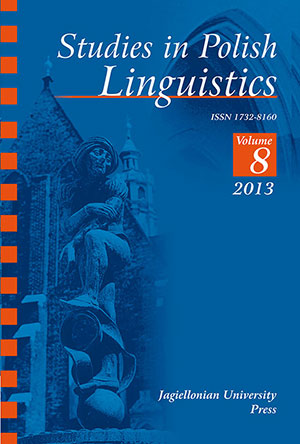Augmentative and evaluative morphemes super(-), ekstra(-), mega(-) and hiper(-) in Polish – a corpus-based analysis
Augmentative and evaluative morphemes super(-), ekstra(-), mega(-) and hiper(-) in Polish – a corpus-based analysis
Author(s): Joanna Pakuła-BorowiecSubject(s): Language and Literature Studies
Published by: Wydawnictwo Uniwersytetu Jagiellońskiego
Keywords: neoclassical morphemes; language fashion; quantitative analysis; qualitative analysis; productivity; corpus
Summary/Abstract: This paper provides an analysis of four neoclassical morphemes super, ekstra, mega and hiper, both as prefixes and as free lexical items, in contemporary Polish as represented in the Polish National Corpus. The collected data containing instances of the morphemes have been analysed so as to define their syntactic functions and to obtain quantitative results, i.e., to determine the exact number of instances of the morphemes occurring as free lexical items and as bound morphemes followed by a hyphen as well as integral unhyphenated morphemes. Another aim of the study has been a quantitative analysis of the data, i.e., to record all the instances of the use of the morphemes, including rare uses. The semantic analysis has been aimed to assign the exact meaning to each occurrence of the morphemes and to make general conclusions concerning the frequencies. Still another purpose has been to measure the morphological productivity of the bound morphemes (prefixes) in question based on Baayen’s (1992: 109–149) measure of productivity and Bauer’s (2001) measure of the profitability of a morphological process. The results of the present study contribute to a better understanding of recent phenomena in contemporary Polish.
Journal: Studies in Polish Linguistics
- Issue Year: 8/2013
- Issue No: 1
- Page Range: 15-43
- Page Count: 29
- Language: English

